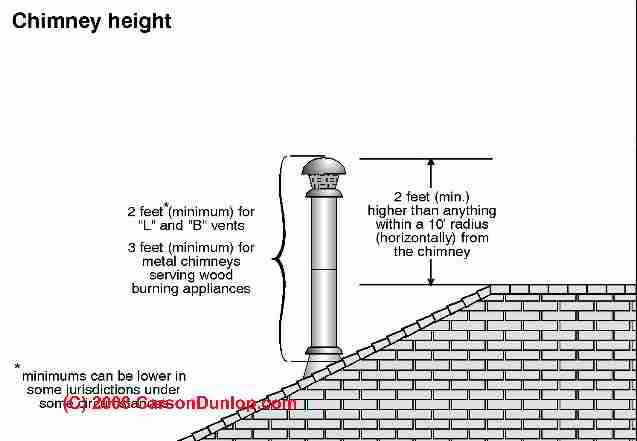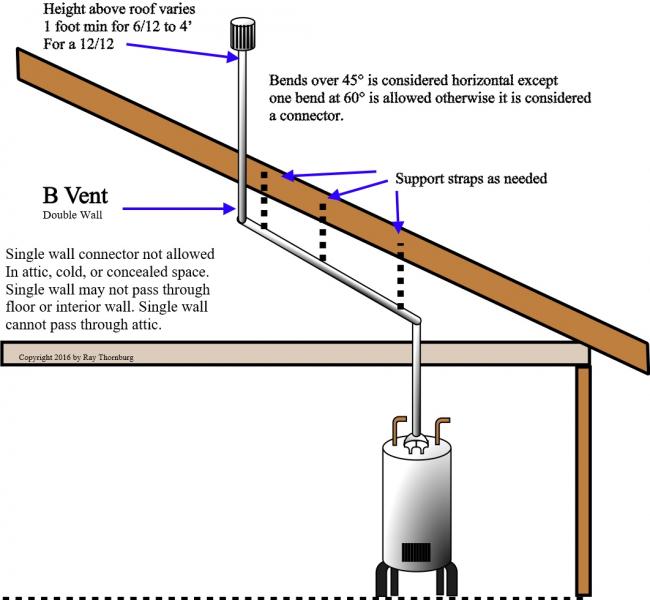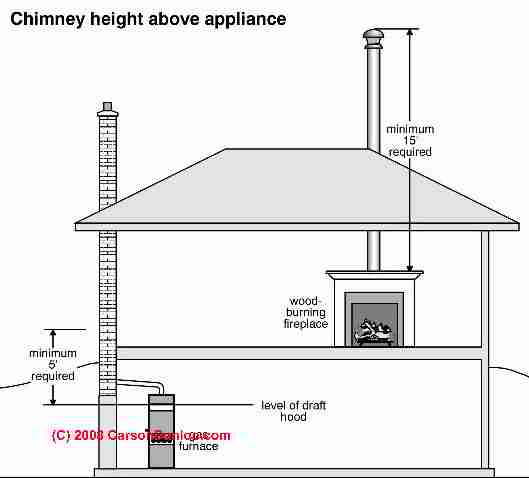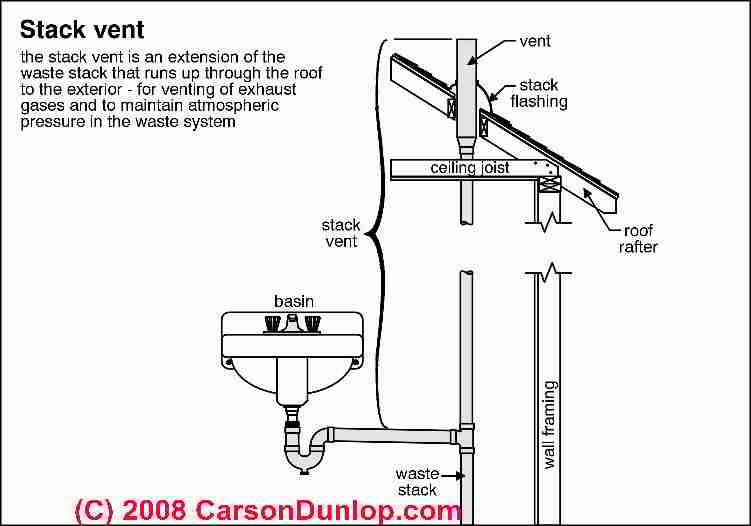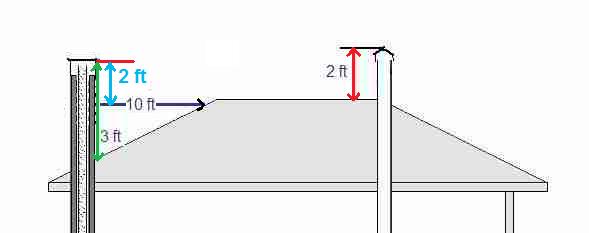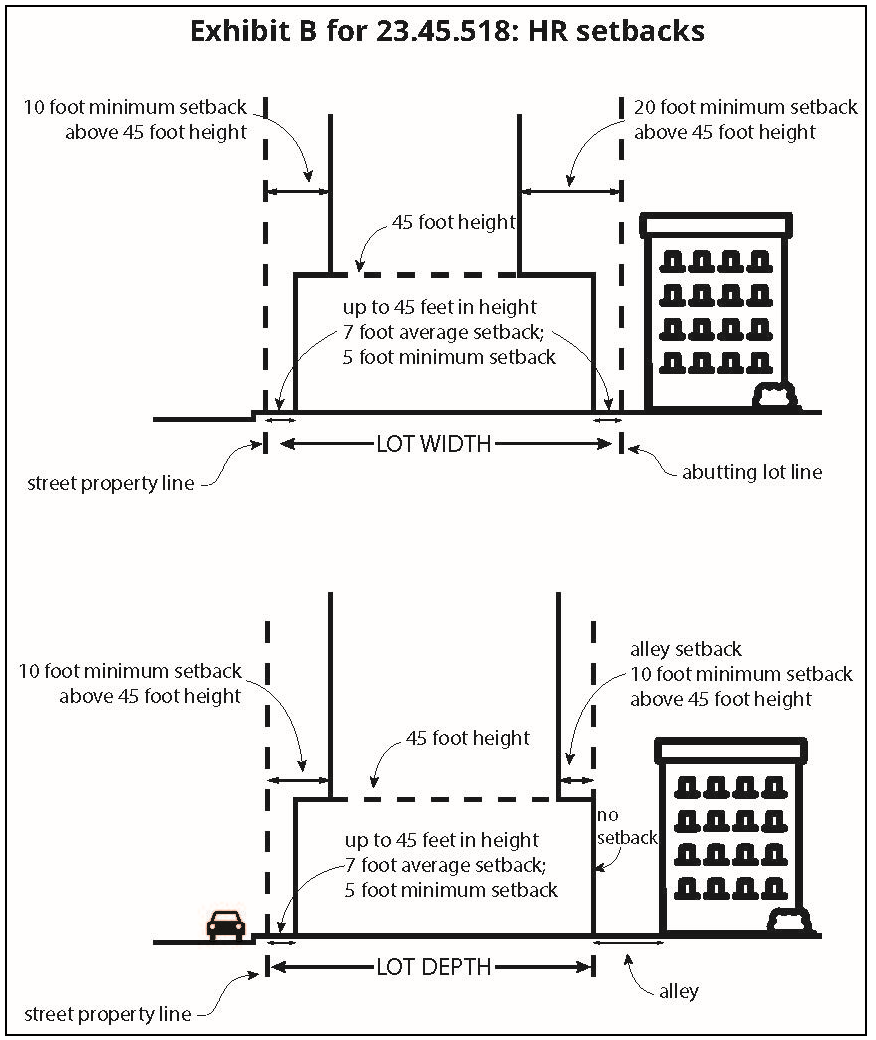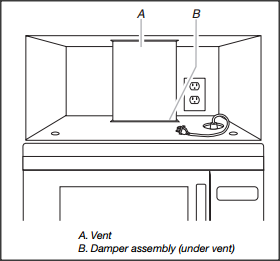B Vent Height Above Roof
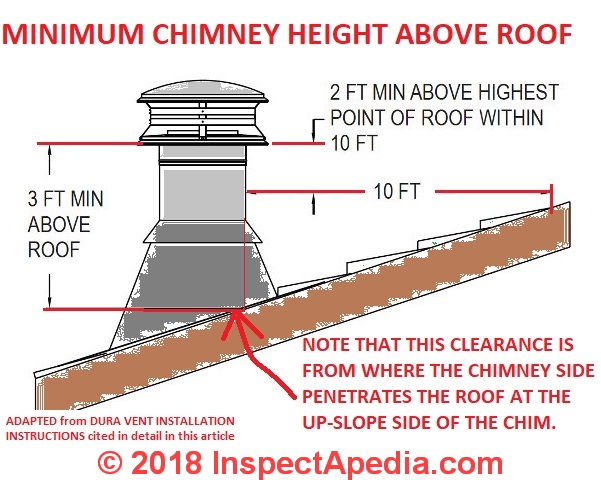
Please note that this rule doesn t generally apply to pellet and gas vent systems.
B vent height above roof. The clearance required from combustible materials is printed on the flue s exterior metal surface and is generally 1 or 2 inches. Above the roof plumbing vent height. Photo at above left. Per the 10 and 2 rule once you are at the level of the peak you only need to be 2 feet above it.
Although a large portion of the flue gas is composed of water vapor amerivent type b gas vent carries it out of the structure before it can condense. This reduces the actual required height by 12 inches from our previous calculation of 64 inches. Upc i 906 1 and 906 2. 2 5 feet above the roof surface.
Vent pipes should extend to outdoors above the building roof and should terminate vertically not less than 6 above the roof surface nor more than 24 and must be at least 12 from any vertical surface such as a nearby sidewall. Type b vents must be equipped with their own special chimney caps. Roof pitch rise run in inches. Table of rooftop chimney clearances for metal b vent chimneys flues.
1 5 feet above the roof surface. However b vent chimney caps 12 and smaller may terminate a distance above the roof if 8 feet or more away from a vertical surface as given in this table. In the case of type b or type l vents each length extending above the roof line must be certified for exterior use and so identified. If the cap is damaged or lost it should not be substituted with something not recommended by the manufacturer.
Metal bracket on a b type vent metal chimney. 1 0 foot above the roof surface 1 7 12 to 8 12. So 28 inches plus 24 inches is a chimney height of only 52 inches. 2 0 feet above the roof surface.
Notice that metallic salts washing off of the metal bracing and other runout of the chimney flashing itself are preventing black algae from growing on some areas of this roof. One of the fire safety features of double wall type b gas vent is that its outer wall insulated by the airspace beneath it requires only 1 clearance to combustible material in the structure.
